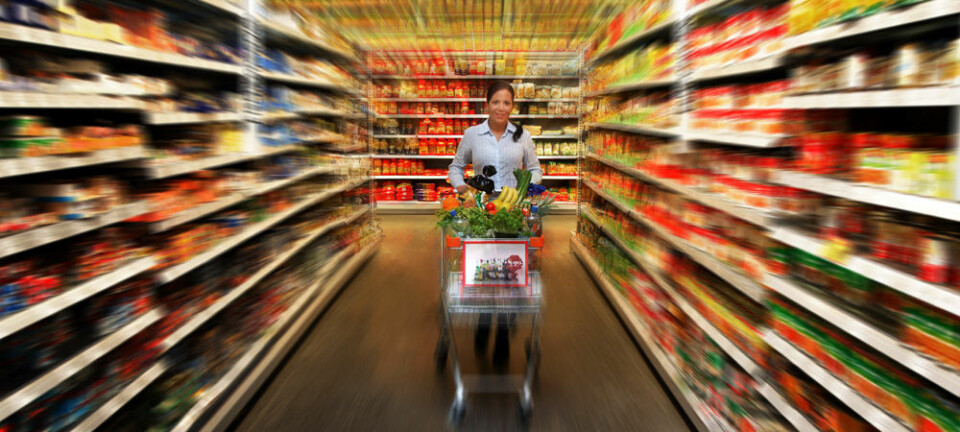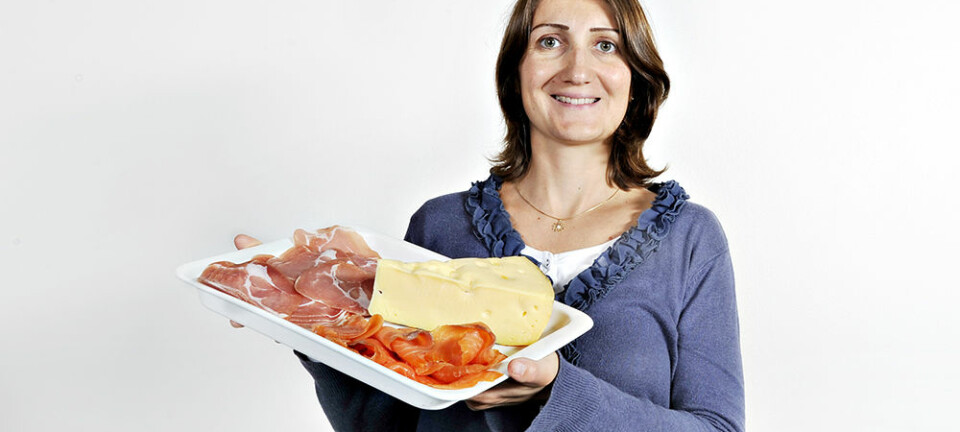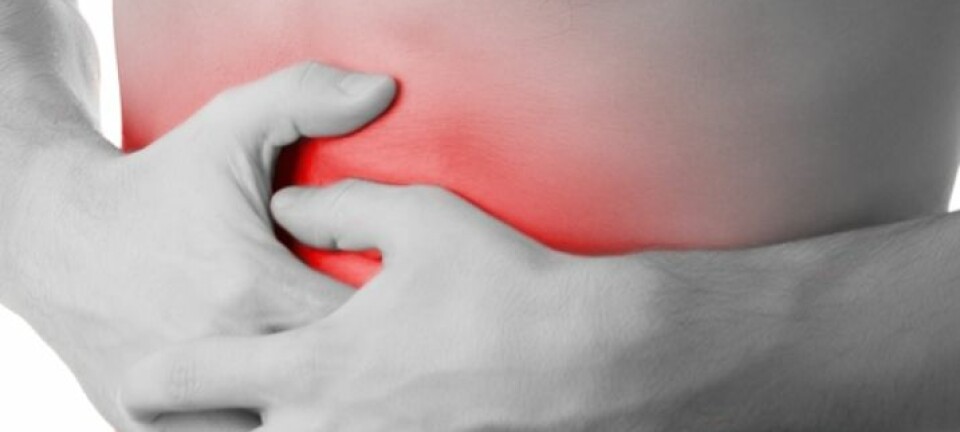
Doctor of hollandaise
Not too much heat, whisk well, and make sure you use enough water. Then you’re on your way to a good butter sauce.
Denne artikkelen er over ti år gammel og kan inneholde utdatert informasjon.
Guro Helgesdotter Rognså has spent plenty of time over pots and pans in the kitchen, but the 29-year-old has also done something no Norwegian before her has done: she earned a PhD in molecular gastronomy.
More concretely, she studied sauces and emulsions under a microscope, and has researched how the choice of ingredients and cooking method affect the final outcome of hollandaise sauce.
“Molecular gastronomy can be described as the science that explains why a dish turns out and tastes the way it does,” says Rognså from her place among the chefs at The Culinary Institute of Norway (GI) in Stavanger.
Sauce research and cooking collaboration
An emulsion is a mixture of two liquids that initially repel each other, such as fat and water, something many people have learned in the kitchen. But this has not been studied from the angle of a professional chef. That is, not until Rognså started researching butter sauces and recently earned a doctorate in molecular gastronomy at the University of Copenhagen.
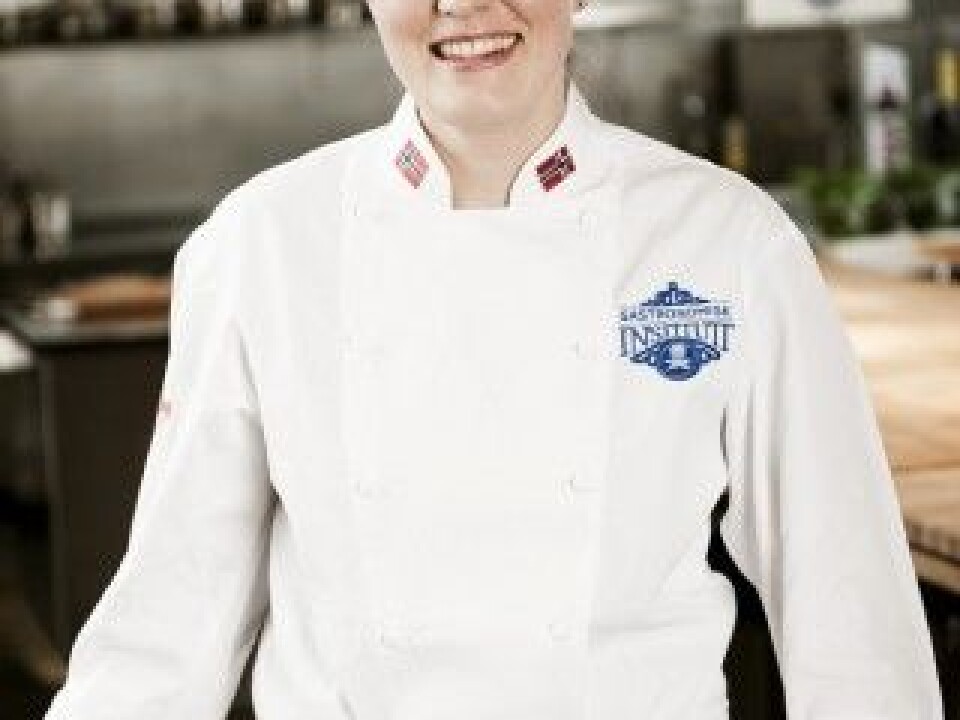
"Emulsions from a culinary perspective - The case of hollandaise sauce and its derivatives," is the exact title of Rognså’s dissertation. As the title suggests, she chose butter sauces as her test products.
Given her interest in food, Rognså’s path to a gastronomic doctorate seemed a perfect fit. Even “smooth as butter”, perhaps? Rognså confirmed that she used at least 200 kg butter for her research, but being a new area of study, she had to forge her own path as she went.
That’s where the chefs at the Culinary Institute came in. “All the others who work here are chefs, and it was important for them to be able to relate to the project. So it was natural to ask what they wondered about most, and pretty quickly the answer was emulsions. They wanted to know what chemical processes occur when making a butter sauce, and how factors like cooking method affect the final product,” says Rognså.
Part of the challenge has been that both scientists and chefs know a lot, but relatively little collaboration has occurred between the professions. This project is strengthening the link between gastronomy and science.
Water and oil
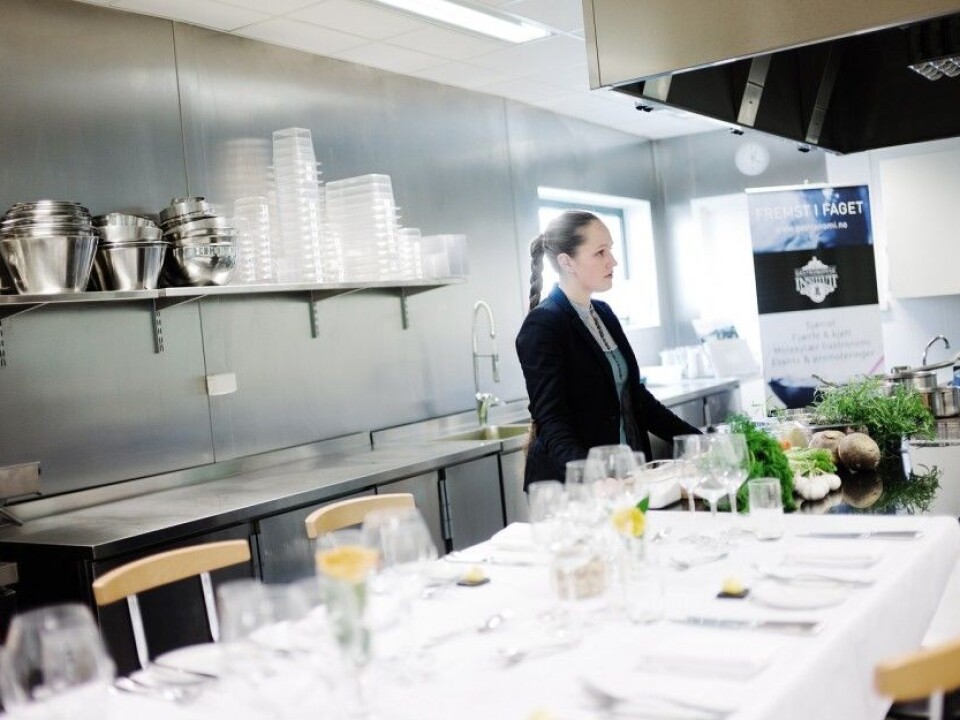
Emulsions separate because they are made of two fluids- water and oil- that don’t mix with each other. To emulsify them, you whip tiny fat droplets into water.
“Fat droplets are normally so small that they can’t be seen with the naked eye, and so emulsions appear to be homogeneous, but under a microscope you can see the fat droplets. Some emulsions separate quickly, and others longer. Milk is an example of an emulsion that separates, and that is why we homogenise it. Homogenisation makes the fat droplets smaller, so they stay suspended and don’t rise to the surface and form a cream layer,” says Rognså.
Now to test this out. The target is a hollandaise sauce, characterized as a “mother sauce” in the French sauce classification. The main ingredients are butter, egg yolks, water and lemon.
A lot can go wrong
Most emulsions are unstable and require something to keep them from separating. Egg yolks are one such ingredient, says Rognså.
An egg yolk contains water, fats and proteins. The egg protein layer that forms on the surface between the fat and water keeps the fat from forming larger droplets when they bump into each other.
“When you make hollandaise or mayonnaise and it separates, many folks believe that it’s because they have too few egg yolks. But this is rarely the problem, since one yolk is enough to make 20 liters of stable mayonnaise. The real problem is that they haven’t added enough water to the emulsion,” said Rognså.
Many factors come into play and a lot can go wrong when making a butter sauce. One common mistake is too high a temperature. If the sauce gets too hot, approaching 80 degrees or more, the yolk proteins coagulate and the consistency becomes more like scrambled eggs.
To avoid this outcome, Rognså suggests making the sauce in a bowl over a pot of hot water instead. With a water bath it is much easier to control the temperature so that it does not get too hot.
No perfect sauces
Rognså says that there is no perfect sauce. Which ingredients are used and how the sauce is made vary from person to person. But she offers a few tips to make good butter sauces.
“Chefs today often start with a sabayonne sauce when they make hollandaise,” says Rognså. “I would recommend that you start by whisking egg yolks and the water based ingredients (wine reduction or water, and lemon juice) in a bowl over steam, until it thickens. Then add warmed butter in a thin stream and whisk well.”
While doing this, pay attention to three things: don’t use too much heat, make sure you whisk enough, and add enough water. Water should make up about 20 per cent of the sauce weight, because it easily evaporates when heated. And with too little water, the sauce will separate.
-------------------------------
Read the Norwegian version of this article at forskning.no
Translated by: Ingrid Nuse








